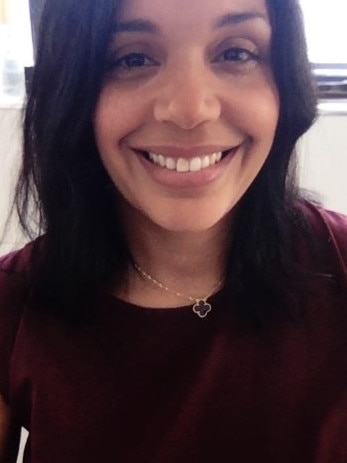‘Tone from the top’: Cathryn Carver on NAB’s trading room culture
In her first interview as head of NAB’s corporate and institutional bank, Cathryn Carver talks culture, customers and growing the business.

Cathryn Carver is no stranger to the trading floor. The veteran banker, and NAB’s new institutional bank boss, meandered her way through the markets divisions of the nation’s biggest lenders, including lengthy stints at Macquarie Bank, Westpac and ANZ, before landing at NAB eight years ago.
In her new role as NAB’s group executive corporate and institutional banking – she’s been in the job since July 1 – Carver finds herself in the dealing room “a couple of times a week”, touching base with the traders and, presumably, watching for any hint of a misdeed, with trading departments at all the banks on alert as ANZ grapples with a major crisis in its markets division, amid accusations of market manipulation.
Two years after Carver’s predecessor David Gall put the bank’s markets division under review following accusations of bullying, harassment and a “boys club” mindset, Carver is confident NAB has its culture settings right.
“We spend a lot of time making sure that, culturally, everything comes back to an integrated approach around the customer,” she says.
“It’s not just about a particular product; it’s about how we look at the client holistically.
“We’re constantly thinking, from a reputational point of view, is what we’re proposing to do the right thing? It’s a really simple question.”
All well and good for the top line to champion the customer and the need to do the right thing but it’s another thing to guarantee that filters down through the ranks.

To that end, spot checks and strong risk and control frameworks back up the tone from the top, Carver says.
The division has also beefed up its risk and compliance team, Gall adds, even though it cut its markets headcount by a reported 10 per cent in the past year. The review of the markets team two years ago cleared the department following claims by former repo trader Dikele Diawara that she was subjected to years of bullying and harassment. She also said she felt “intimidated” when head of trading Tim McCaughey approached her desk carrying a baseball bat.
Ms Diawara’s case is still before the courts but the bank has disputed the claims, with its defence team arguing the bat used by McCaughey was a fidget toy.
The review, along with “insights from the whistleblower program”, showed the markets team was “friendly” and one where “people of different genders and background are respected”, The Australian reported at the time.
Nonetheless, the external reviews “brought out best practices that we could adopt,” Gall says.

“We also see good risk management as being not just a second-line function. It’s about what the first line does, and you can actively choose to look. So really going after that, measuring and talking with our people about the performance of all aspects of their risk management,” he adds.
A network of “whistleblower champions” around the bank has helped build confidence among staff to speak up, as has a move to give good behaviour a spotlight at staff town halls, Gall says.
“You can have wonderful performers, but if they’re not doing it the right way, and if they don’t have the right behaviour, then that’s not going to get rewarded. In fact, quite the contrary. So performance doesn’t trump how you go about it.”
Corporate and institutional banking (C&IB) is one of NAB’s key divisions, and its second-biggest earner. It accounted for 23 per cent of NAB’s first-half cash earnings this year.
When chief executive Andrew Irvine stepped into the top job at the bank earlier this year, he put his stamp on the leadership team, promoting a trio of women to senior executive positions.
Alongside Carver sit Rachel Slade, the head of the business bank, and Ana Marinkovic, who replaced Slade as group executive for personal banking.
In one swoop, Irvine achieved gender parity within his leadership team, with five of the 10 top executives now women.
While revenue in C&IB declined slightly in the last half due to lower markets income, partially offset by stronger margins, Carver is following the path set by Gall to grow at a “disciplined” pace.

“Some of the sectors that we’ve doubled down on (are) financial sponsors, non-bank financial institutions, government and education, and a very important sector called private corporates, which (we think of as) an extension of our SME franchise,” she says.
“That tightness with business and private is really important to us in terms of supporting our clients as they grow. We’ve got some very successful businesses across that (small and medium-sized) spectrum, which, over time, will grow into corporates.”
The ageing population, net zero targets, interest rates and market volatility, particularly in recent days, are all top of mind for NAB’s corporate clients right now. Part of the bank’s job is to help get them through the challenges, Carver says.
“In this kind of world, where we’ve got higher interest rates, and we’re expecting those interest rates to remain higher … it’s even more important that we innovate and we offer solutions to help our clients manage in this environment.
“The other thing is the moments of truth for our customers … all clients get into tricky situations at times. But are you (the bank) there as a partner? That’s how I think about how we will grow. You can’t underestimate that being consistent in what you do drives value.”






To join the conversation, please log in. Don't have an account? Register
Join the conversation, you are commenting as Logout